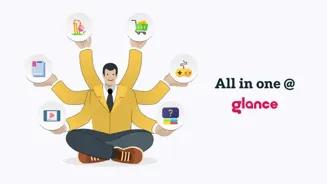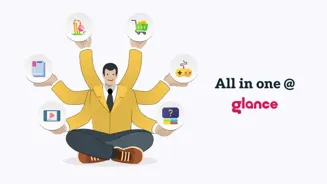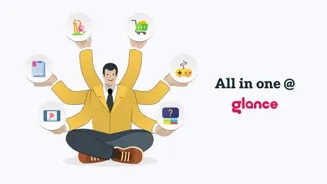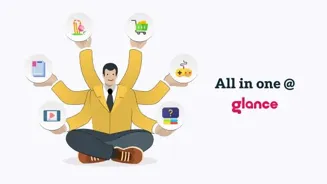Unlock Your Productivity Potential with 10 Time Management Tools! Dive in to boost your efficiency and conquer your goals
In the bustling landscape of India, where deadlines loom and opportunities abound,
mastering time management is no longer a luxury but a necessity.
Whether you're a student juggling assignments, a working professional navigating demanding projects, or an entrepreneur building your dream, effectively managing your time can unlock unparalleled productivity and reduce stress.
This article delves into 10 practical tools and techniques that can empower you to take control of your day and achieve your goals with greater ease and efficiency.
Prioritization Power: The Eisenhower Matrix
Amidst the whirlwind of tasks, it's easy to get caught up in activities that seem urgent but are not truly important. The Eisenhower Matrix, also known as the Urgent-Important Matrix, provides a simple yet powerful framework for prioritizing tasks.
Divide your tasks into four quadrants: Urgent and Important (do these immediately), Important but Not Urgent (schedule these tasks), Urgent but Not Important (delegate if possible), and Neither Urgent nor Important (eliminate these).
By focusing on the "Important" tasks, regardless of their urgency, you'll be investing your time in activities that truly move you closer to your objectives. This tool helps you identify what matters most and prevents you from getting bogged down in less significant matters.
The first step is to jot down all your pending tasks, both big and small. Then, carefully assess each task based on its urgency and importance. Be honest with yourself – is this task truly contributing to your long-term goals, or is it simply a distraction disguised as something important?
Once you've categorized your tasks, follow the action plan associated with each quadrant. For example, if you have a project deadline looming (Urgent and Important), block out dedicated time slots in your calendar to work on it without interruptions.
If you want to learn a new skill (Important but Not Urgent), schedule regular study sessions. By consistently applying the Eisenhower Matrix, you'll develop a keen sense of prioritization and learn to allocate your time more effectively.
Digital Darlings: Calendar Apps and Task Managers
In today's digital age, a plethora of apps are available to help you organize your schedule and manage your tasks. Calendar apps like Google Calendar, Outlook Calendar, and Apple Calendar allow you to schedule appointments, set reminders, and share your availability with others.
Task managers like Todoist, Asana, and Trello enable you to create to-do lists, assign tasks to team members, track progress, and set deadlines. The beauty of these digital tools is that they can be accessed from anywhere, at any time, ensuring that you're always on top of your schedule.
Familiarize yourself with these digital tools.
These apps not only help you stay organized, but also offer features that enhance your productivity. For instance, many calendar apps allow you to set recurring events, which is particularly useful for regular meetings or daily routines.
Task managers often offer features like project breakdowns, allowing you to break down large projects into smaller, more manageable tasks. Experiment with different apps to find the ones that best suit your needs and workflow.
Once you've found your preferred apps, take the time to learn their features thoroughly. Investing a little time upfront to master these tools can save you countless hours in the long run.
The Pomodoro Technique: Short Bursts of Focus
For those who struggle with maintaining focus for extended periods, the Pomodoro Technique can be a game-changer. This technique involves working in focused bursts of 25 minutes, followed by a short 5-minute break.
After every four "pomodoros" (25-minute work intervals), take a longer break of 20-30 minutes. This technique leverages the power of focused attention and short breaks to combat mental fatigue and increase productivity.
It helps you stay on track, prevents procrastination, and ensures that you're constantly engaged in the task at hand. The Pomodoro Technique is very effective.
The key to the Pomodoro Technique lies in staying truly focused during the 25-minute work intervals.
During this time, eliminate all distractions, such as social media notifications, emails, and phone calls. Communicate to your colleagues or family members that you need uninterrupted time to focus. Using a timer is crucial for maintaining the structure of the Pomodoro Technique.
There are many apps available that are specifically designed for this purpose. Experiment with different work and break durations to find what works best for you. Some people may prefer longer work intervals, while others may benefit from more frequent breaks.
The Two-Minute Rule: Conquer Small Tasks Immediately
Procrastination often stems from feeling overwhelmed by large tasks. The Two-Minute Rule, popularized by David Allen in his book "Getting Things Done," provides a simple yet effective solution. The rule states that if a task takes less than two minutes to complete, do it immediately.
This prevents small tasks from piling up and becoming a source of stress. Examples of tasks that can be completed in two minutes include responding to a quick email, paying a bill online, or filing a document. The 2 minute rules is an incredible tool.
By adhering to the Two-Minute Rule, you'll be surprised at how much you can accomplish in a short amount of time. It's a great way to clear your mind, reduce mental clutter, and create a sense of momentum. The key is to be proactive and tackle these small tasks as soon as they arise.
Don't let them linger on your to-do list, taking up valuable mental space. Make it a habit to assess incoming tasks and determine whether they can be completed within two minutes. If so, tackle them immediately and mark them off your list.
Time Blocking: Schedule Everything, Even Breaks
Time blocking is a powerful technique that involves allocating specific time slots in your calendar for specific tasks or activities. Instead of simply creating a to-do list, you actually schedule when you're going to work on each task.
This creates a visual representation of your day and helps you ensure that you're allocating sufficient time for your priorities. Time blocking can be used for both work-related tasks and personal activities, such as exercise, relaxation, or spending time with family.
When creating your time blocks, be realistic about how long it will take you to complete each task. Factor in buffer time for unexpected delays or interruptions. Don't be afraid to adjust your time blocks as needed, but try to stick to your schedule as closely as possible.
Treat your time blocks as appointments that you can't miss. This will help you stay committed to your schedule and avoid getting sidetracked. Time blocking is a wonderful method to increase productivity.
Batching Similar Tasks: Maximize Efficiency
Multitasking is often touted as a way to increase productivity, but research has shown that it can actually decrease efficiency. When you switch between tasks frequently, your brain has to expend extra energy to re-focus and re-orient itself.
Batching similar tasks together, on the other hand, allows you to enter a state of "flow" and work more efficiently. For example, instead of checking your email sporadically throughout the day, set aside specific time slots for processing emails.
Similarly, you can batch together tasks like phone calls, report writing, or social media posting.
Batching tasks can significantly reduce mental fatigue and increase your ability to focus. By grouping similar activities together, you can minimize distractions and maintain a consistent workflow.
Review your to-do list and identify tasks that can be batched together. Experiment with different batching strategies to find what works best for you. For example, some people may prefer to batch tasks by type, while others may prefer to batch tasks by project.
The Power of "No": Saying "No" to Unnecessary Commitments
One of the biggest time-wasters is saying "yes" to commitments that you don't have time for or that don't align with your priorities. Learning to say "no" is a crucial skill for effective time management. It's okay to decline requests that will overextend you or distract you from your goals.
Politely decline the request and, if appropriate, offer an alternative solution or suggest someone else who might be able to help. Saying no can be difficult.
Before agreeing to any new commitment, take a moment to assess its impact on your schedule and your priorities.
Consider whether you have the time and resources to fulfill the commitment effectively. Don't be afraid to say "no" if you're already overcommitted. Remember, it's better to decline a request upfront than to overpromise and underdeliver. It is beneficial to say no to non-important tasks.
The Importance of Breaks and Rest: Recharge Your Batteries
While dedication to work is important, taking regular breaks and getting adequate rest are equally crucial for productivity. Working continuously without breaks can lead to burnout, decreased focus, and reduced creativity.

Schedule regular breaks throughout the day to step away from your work, stretch your legs, and clear your mind. Aim for at least 7-8 hours of sleep each night to allow your body and mind to recharge. Breaks and rest are very important.
Use your breaks to do something that you enjoy and that helps you relax. This could include going for a walk, listening to music, reading a book, or spending time with loved ones. Avoid checking your email or working during your breaks.
Create a relaxing bedtime routine to help you wind down before sleep. This could include taking a warm bath, reading a book, or practicing meditation.
Eliminate Distractions: Create a Focused Environment
Distractions are enemies of productivity. In today's digital world, there are countless distractions vying for our attention, from social media notifications to email alerts. To maximize your focus, it's essential to minimize distractions.
Turn off notifications on your phone and computer, close unnecessary tabs in your browser, and let your family or colleagues know that you need uninterrupted time to focus.
Create a dedicated workspace that is free from clutter and distractions.
This could be a home office, a quiet corner in your house, or a desk at the library. Use noise-canceling headphones to block out distracting sounds. Use website blockers to prevent yourself from accessing social media or other distracting websites during work hours.
Eliminate distractions and create focus.
Reflect and Adjust: Continuously Improve Your System
Time management is an ongoing process. What works for you today may not work for you tomorrow. It's essential to regularly reflect on your time management strategies and adjust them as needed. Experiment with different techniques, track your progress, and identify areas where you can improve.
Be patient with yourself and remember that it takes time and effort to develop effective time management habits. Review your progress and make changes.
At the end of each day or week, take a few minutes to review your to-do list and your schedule.
Assess whether you were able to accomplish your goals and identify any challenges you faced. Consider what you could have done differently to manage your time more effectively. Continuously refine your time management system based on your experiences.
AI Generated Content. Glance/InMobi shall have no liability for the content










